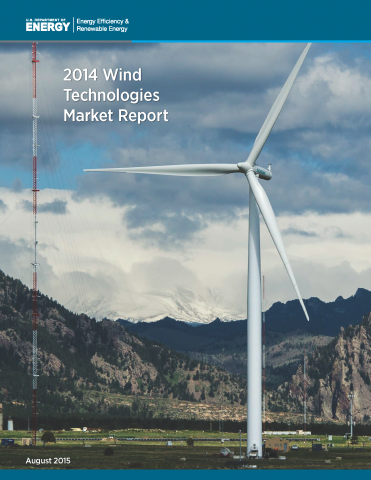The U.S. Department of Energy (DOE) has released new data showing the cost of wind energy has declined by nearly two-thirds over the last six years according to the report 2014 Wind Technologies Market Report. DOE Energy Secretary Ernest Moniz noted, however, that to keep the momentum going there must be stable energy policy.
 “With declining costs and continued technological development, these reports demonstrate that wind power is a reliable source of clean, renewable energy for American homes and businesses,” Secretary Moniz said in a statement. “Through continued investments and the help of stable policies, we’re confident that wind power will keep playing a major role in creating jobs and shaping America’s clean energy future.”
“With declining costs and continued technological development, these reports demonstrate that wind power is a reliable source of clean, renewable energy for American homes and businesses,” Secretary Moniz said in a statement. “Through continued investments and the help of stable policies, we’re confident that wind power will keep playing a major role in creating jobs and shaping America’s clean energy future.”
In reaction to the report, the American Wind Energy Association (AWEA) said this success has been driven by performance-based renewable energy tax incentives that drive U.S. manufacturing and American ingenuity. The report finds that since 2009, costs have fallen 65.5 percent. This makes the U.S. the global leader in total wind energy production.
“While this report is good news, extending the Production Tax Credit and Investment Tax Credit remains critical for keeping Americans at work, reducing the cost of wind energy and continuing to scale up this homegrown resource through the end of this decade,” said Tom Kiernan, CEO AWEA. “Wind energy is increasingly cost-competitive in several parts of the U.S., but we need stable, predictable policy to continue bringing this consumer benefit to every corner of the country. Policy stability will keep this American economic success story going.”
There must be, called Kiernan, an extension of the Production Tax Credit (PTC) and Investment Tax Credit (ITC) and said the near-uncertainty in these credits puts investments at risk. The last time the credits were not expanded the U.S. wind energy industry lost nearly 30,000 jobs and caused wind installations to drop 92 percent the following year. Kiernan concludes by noting that Federal policy plays a critical role in the wind industry’s decisions to make long-term investments in U.S. manufacturing facilities, research and development, and worker training to create the modern American wind industry, and thus, the credits must stay in place.

